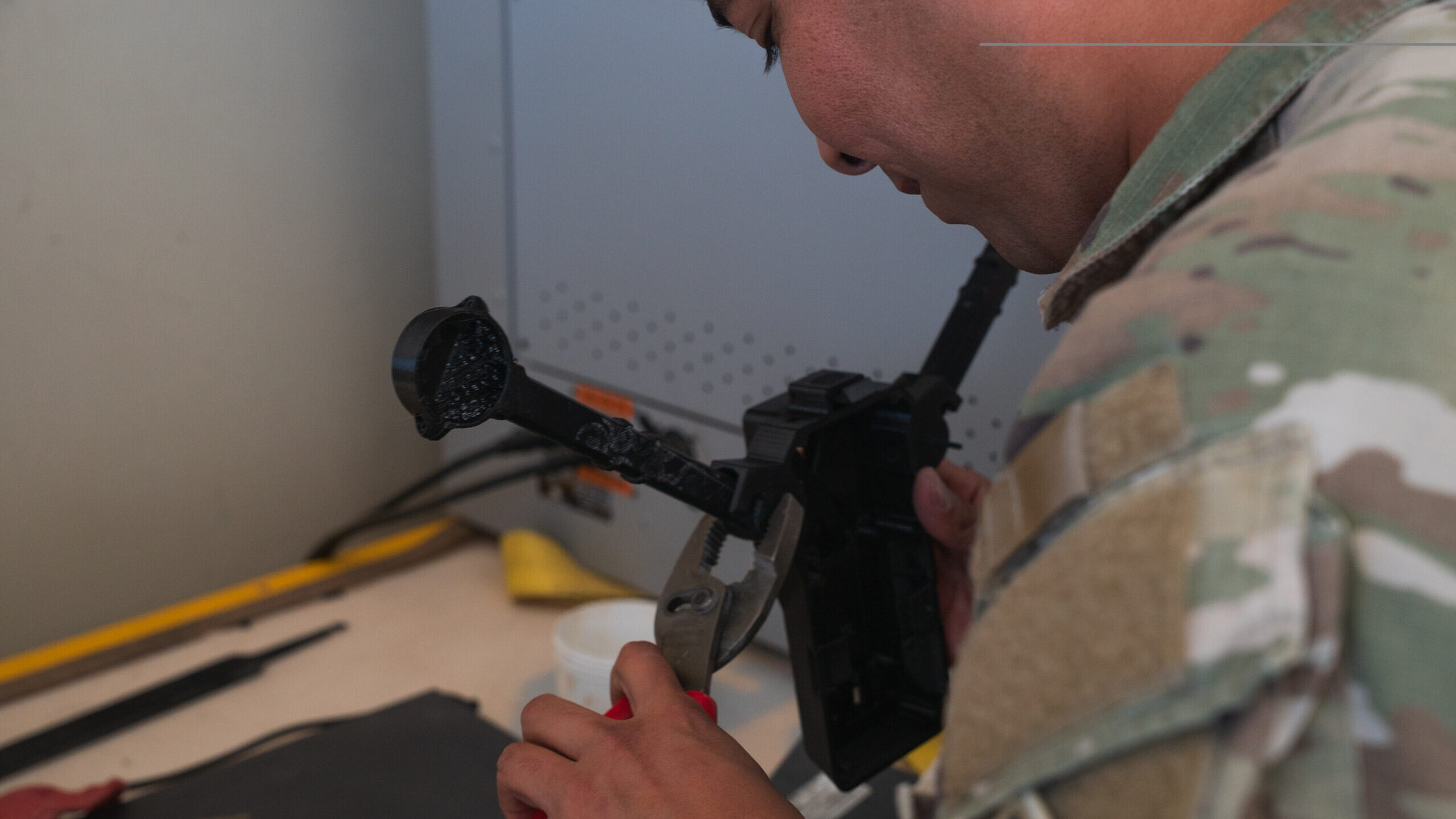
WASHINGTON — The Army is expanding its use of additive manufacturing in the battlefield as the service is now allowing commanders to repair and send back out pieces of small 3D-printed equipment, instead of waiting for permission from the service’s higher ups, Army Secretary Daniel Driscoll said today.
“[We’re] empowering our generals to take on that risk where we have the right to repair so that they can make these very small parts to get things back on and get them back into the hands of our soldiers. I think you’re going to think that these are kind of one-off instances. I don’t know the exact number, but my commitment to you is, or my best guess is, that this is a meaningful step forward,” Driscoll told reporters during a media roundtable today.
Driscoll explained that commanders and soldiers in the battlefield are using 3D printers to print parts for platforms like infantry squad vehicles and M777 Lightweight 155mm howitzers. But now, instead of getting approval to use these parts from Army leaders who are not present in the battlefield, the commanders are allowed to decide if the parts are good to go out.
“We’re basically saying, ‘Hey colonel, hey general, you have to make the decision. If a door handle is broken on an ISV, you need to get it into the field. If you think that replacement door handle is sufficient, send it out.’
“A lot of [howitzers] are down right now for very simple pieces that we could 3D print and have known how to 3D print, and actually have the design files to 3D print, but we haven’t done it,” Driscoll said. “So we, the Army, have kicked off a very aggressive approach to that.”
3D printing has been a prominent goal for the service over the past several months, and this change, coupled with improvements in additive manufacturing technology, has allowed for the service to get platforms fixed and up and running at a more desirable speed, Gen. Randy George, chief of staff of the Army, added. He said that the “couple thousand” parts the Army has 3D printed for such instances thus far are “probably better than the original parts.”
Given the success and growing prominence of additive manufacturing, Driscoll said it will likely serve as a critical capability in the Indo-Pacific theater, explaining that because of the significant logistical challenges military forces face due to the vast geographical distances involved in the theater, otherwise known as the “tyranny of distance,” the US will be under-equipped to build and ship new parts in the traditional way.
“The way around that is technology and additive manufacturing, where our soldiers are actually able and capable of printing things for munitions or other purposes in the theater or in the area where we send them,” Driscoll said.
Further, Driscoll said he predicts that additive manufacturing will receive more funding in the fiscal year 2027 budget, especially given the imminent threat of a potential conflict with China, which the Pentagon has said could potentially happen in 2027.
“If you think of us in a protracted war with a peer or near peer [adversary], our manufacturing, our ability to either manufacture physical things or software, the ability to update in near real time, is going to be crucial,” he said.



